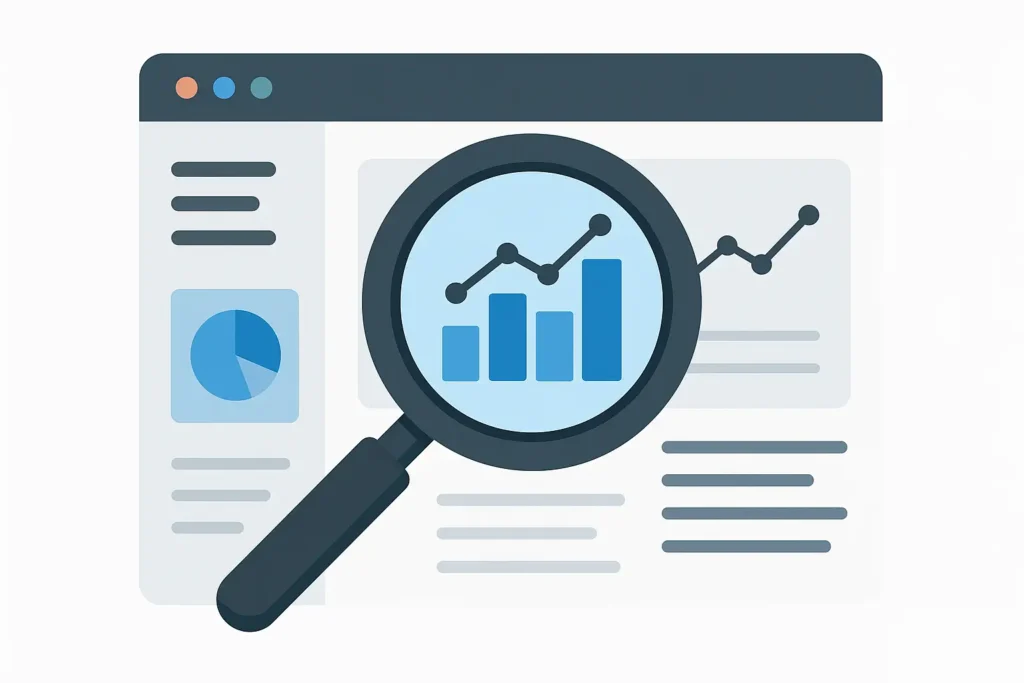When your website stops growing, rankings dip without warning, or traffic drops in ways you can’t explain, the problem usually runs deeper than simple SEO mistakes. That’s when forensic SEO audits becomes essential. Unlike routine SEO checkups, a forensic audit investigates every hidden corner of your site—exposing errors, penalties, and structural flaws that silently hold you back.
If you’ve ever wondered why competitors outrank you despite weaker content, or why your organic traffic has flatlined, the answers often lie in unseen performance gaps. Let’s break down what forensic SEO really means, how it uncovers these gaps, and why investing in this kind of audit could be the difference between stagnation and real growth.
What makes forensic SEO different?
Most SEO audits check for missing tags, broken links, and keyword usage. That’s useful—but it only scratches the surface. A forensic SEO audit digs deeper, with an investigative approach designed to reveal issues that don’t show up on standard reports.
Some examples of what it looks for include:
- Algorithmic penalties quietly holding your site down.
- Content cannibalization where your own pages compete against each other.
- Suspicious backlinks that damage authority instead of building it.
- Rendering and crawl barriers that stop Google from fully understanding your site.
- Structural weaknesses in navigation and internal linking that confuse both users and search engines.
It’s the difference between a quick check-up and a full-body scan.
Why businesses need forensic SEO
Many websites never realize how much they’re losing until it’s too late. Even small hidden issues compound over time, costing you traffic, leads, and revenue. Here’s why a forensic audit matters:
1. Spot silent traffic leaks
A blocked resource, an incorrect redirect, or an overlooked crawl error can push key pages out of Google’s index. Without a forensic audit, these problems remain invisible until rankings tank.
2. Recover from penalties faster
Drops in visibility aren’t always competition—sometimes it’s a penalty. A forensic audit identifies whether your site is being suppressed by algorithm updates or manual actions, and guides the recovery process.
3. Eliminate content cannibalization
If multiple pages target the same keyword, you end up competing against yourself. A forensic SEO audits exposes overlaps so you can consolidate content and strengthen rankings.
4. Optimize user and search engine experience
Even the best content won’t perform if it’s buried under poor site structure. A forensic audit highlights flaws in navigation and linking, helping search engines crawl efficiently while giving users smoother journeys.
Core areas of a forensic SEO audits
To reveal unseen performance gaps, a forensic SEO audits examines every critical layer of your website. The most impactful areas include:
Technical SEO
- Crawlability and indexation checks
- Server log analysis to see how bots interact with your site
- Mobile rendering and JavaScript performance
- Core Web Vitals and page speed diagnostics
- Duplicate content and canonicalization issues
Content Audit
- Identifying keyword cannibalization
- Spotting thin or outdated pages
- Analyzing topic coverage and content gaps
- Reviewing E-E-A-T signals (Experience, Expertise, Authority, Trustworthiness)
Backlink Profile Review
- Identifying toxic or spammy links
- Reviewing anchor text distribution
- Evaluating link velocity and natural growth
- Comparing domain authority against competitors
Site Structure and Architecture
- Internal linking strength and orphaned pages
- URL structure and hierarchy
- Depth of critical pages in navigation
- Siloing strategy for topical relevance
How forensic SEO drives long-term growth
Unlike surface-level fixes, forensic SEO creates a roadmap for lasting performance. Once hidden issues are uncovered, you can:
- Reclaim lost traffic by restoring indexation and fixing errors.
- Build stronger authority through a cleaned-up backlink profile.
- Improve content efficiency by consolidating duplicate or competing pages.
- Provide users with better navigation, boosting engagement and conversions.
It’s not just about solving problems—it’s about creating an SEO foundation that supports growth for years.
Getting started with forensic SEO
If your site’s performance feels stuck, a forensic audit is the best way to regain clarity. Instead of guessing what’s wrong, you’ll see concrete data showing exactly where performance gaps exist. From there, you can prioritize fixes with the biggest ROI.
That’s where tools like SEOsets help. They simplify the audit process, allowing you to uncover issues that most businesses overlook and build a strategy that gets results.
FAQs
1. How is a forensic SEO audit different from a regular SEO audit?
A regular audit looks at surface-level factors like on-page tags and broken links. A forensic audit investigates deeper technical, content, and backlink issues that are often hidden but highly damaging.
2. How long does a forensic SEO audit take?
Depending on the site size, it can take anywhere from a few days to a couple of weeks. Large sites with thousands of pages require more in-depth analysis.
3. Do I need a forensic SEO audit if my traffic hasn’t dropped?
Yes. Performance gaps often go unnoticed until they become serious problems. Conducting an audit proactively ensures your site stays ahead of issues.
4. Can a forensic audit fix penalties?
While the audit itself doesn’t fix penalties, it identifies the root cause—allowing you to take corrective actions, submit reconsideration requests, or adjust strategies for recovery.
5. How often should forensic SEO audits be done?
At least once a year, or after major algorithm updates. Sites in highly competitive industries may benefit from bi-annual audits.


